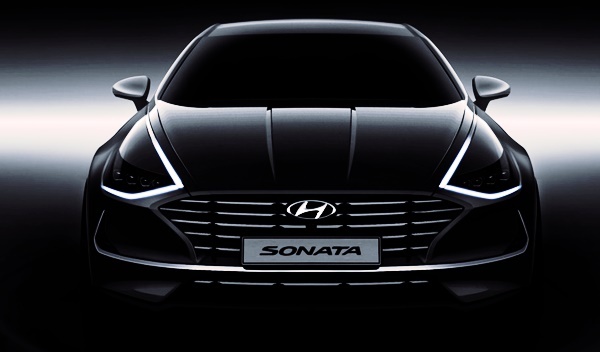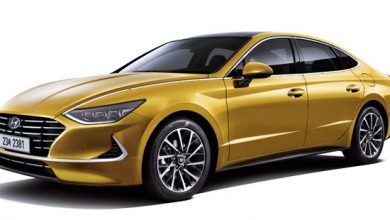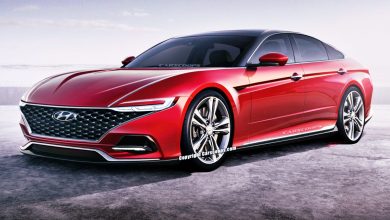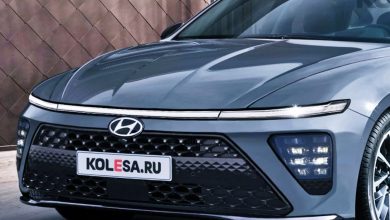New 2022 Hyundai Sonata N-Line
New 2022 Hyundai Sonata N-Line
2022 Hyundai Sonata N-Line – Hyundai has created Hyundai’s most powerful front-wheel sedan ever, the 2022 Hyundai Sonata N Line. This is the first performance version of the brand’s popular mid-size sedan and wants to steal some practical-minded fans from the Honda Accord 2.0T, Mazda 6, and Toyota Camry TRD.
The Sonata N Line will be difficult to choose from the usual Sonata in the distance. Her style cues are subtle and easy to miss at a glance.
2022 Hyundai Sonata N-Line
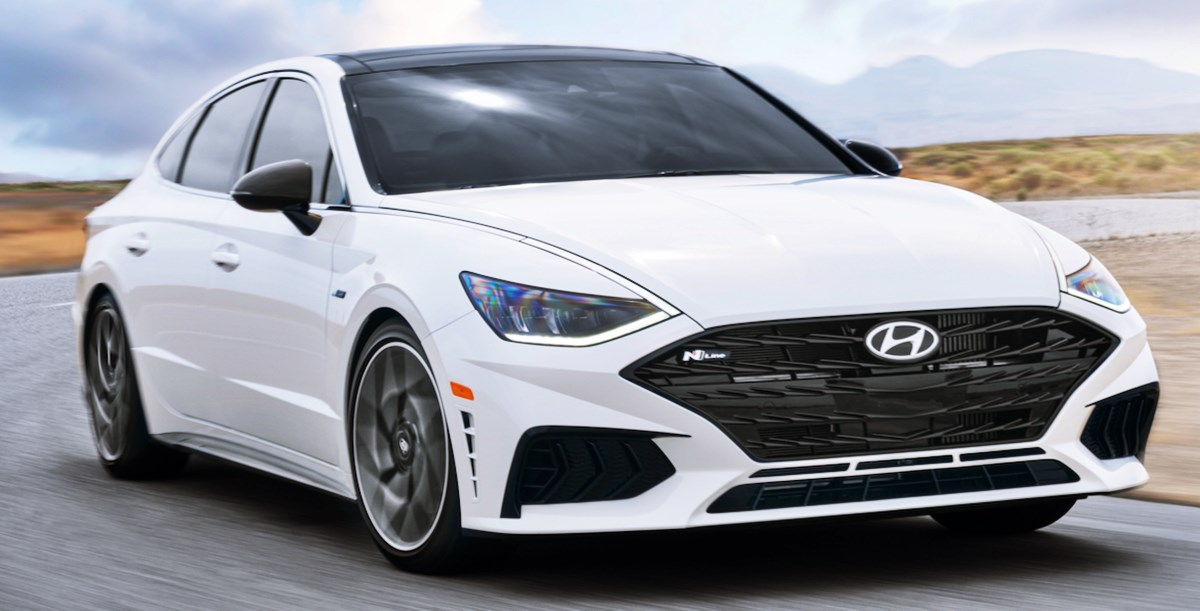
It boasts a larger 19-inch wheel set up, larger brakes to add durability, quad exhaust ends, slightly tweaked front and rear fascias, lip spoilers, and a small N badge located on the front fenders and grille. It would be easier to hear the Sonata N Line come up with a beef exhaust note than to take it from the lineup.
Sonata N-Line Redesign
The redesign features the Sonata N Line 2022, Hyundai’s new sport-focused variant. While not an all-out N car like the riotous Veloster N or the upcoming Elantra N, athletes from the Sonata range have engines with nearly 100 hp more than other variants, plus unique wheels, dual exhaust outlets, and N Line front and rear styles.
Cars require an untold number of engineers to go from paper to sheet metal, so it always seems unfair to put the success or failure of one on the feet of just one of them. That’s the nature of leadership, though. You take the win or lose.
Albert Biermann personally did not choose the parts and calibration that make the Hyundai Sonata N Line drive 2020. Still, his philosophy has been so faithfully executed by driving that it is impossible not to recognize its influence.
Patterned after the German carmaker’s strategy, N Line is a road-class performance trim rather than a full boat track package. They were branded just “N,” and the Sonata was not scheduled for any of those models. Instead, the N Line trim packs larger engines, routers, dual-clutch transmissions, larger brake rotors with performance bearings, stiffer suspension, and damper bushings.
Behind the large grille that collapsed was the new turbocharged 2.5-liter inline-four shared with the Genesis G80 and GV80. Turbo four was also distributed to the Sonata platform pair, the Kia K5 GT. He pumped out 290 full horsepower at the Sonata at 5,800 rpm and 311 pound-feet of torque at just 1,650 rpm.
That’s 99 more horsepower and 130 pound-feet more torque than the Naturally Envisioned Sonata of 2.5 liters and 110 more ponies and 116 pound-feet on top of the Sonata’s available 1.6-liter turbo-four.
To get there, engineers strengthened the naturally envisioned 2.5-liter block, integrated its exhaust manifold into the cylinder head, lowered the compression ratio from 13.0:1 to 10.5:1, and sped up on the turbocharger to swell the intake with a boost.
Hyundai also matches its new eight-speed dual-clutch automatic transmission, a gearbox that also pulls the Veloster N task, Kia K5 GT. On the Elantra N. Developed in-house, the transmission has a wet clutch package, is properly responsive, and shifts quickly and smoothly, but doesn’t feel quite straight and sharp as it did in Elantra N.
The first four gears have tight spaces and match the engine torque curve, high and flat up to 4000 rpm. There is some midrange power, and the 4 large cylinders pull well to 6250 rpm.
To reduce the time to 60 mph, Hyundai created a control program that makes drag racing a cinch. Theoretically, launch control optimizes acceleration, but the car’s programming returns inconsistent results and decreases turbo drive.
While our absolute fastest run was computer-assisted, it was our driver’s skill that produced a two-way average of 60-mph in 5.0 seconds and 13.6 seconds at 105 mph through a quarter of a mile. The N Line is the fastest front-drive family sedan we’ve tested, beating the Accord 2.0T and Camry TRD by 60 mph by 0.4 and 0.6 seconds, respectively.
This hot sonata even matches the time set by the now-malfunctioning Ford Fusion Sport, which weighs far more than Hyundai, which has yet to use the all-wheel-drive 325-hp twin-turbo V-6.
After several Hyundai investigations, they found a software error that limited torque if too much brake pressure was applied during launch. Even without the help of an aggressive launch, the Sonata posted an impressive 5 to 60 mph time of 5.2 seconds, illustrating the engine’s rapid response and lack of lag.
Sonata N-Line Horsepower
Indulging in N Line horsepower limits it to an average of 23-mpg while in our care, which is in line with its EPA city estimates. However, that’s equal to the federal rating of 33-mpg on our 200-mile highway fuel-economy test.
Unfortunately, there is a weakness of Hyundai’s new strength. It’s been a long time since we complained about torque steering, but the throttle’s heavy application is felt through Hyundai steering. It doesn’t turn the clock back 20 years, changing its own lanes on hits like the supercharged Pontiac Bonneville SSEi — not even close – but you’ll know you buy a front-wheeled car every time you put your foot down.
All the turbulent forces through the front wheels are clearly visible on the tight mountain roads. Although continental premium contact 6 summer tires are 245/40R-19 (Pirelli P Zero All Seasons is standard), Hyundai has more oomph than a forward bite.
2022 Hyundai Sonata N-Line Exterior

Engage Sport mode, which disables Sonata’s traction control and rotates its front tire from a tight second gear angle, produces a graceful smell of white tire smoke rising and passing through the windshield. It’s not as fun as it sounds like a tire screaming and screaming for life. Please don’t listen to their pleas to slow down. Keep pressing, and the Continent proves they have more grip to give.
You will find the biggest difference between the N Line and the standard Sonata under the hood. Replacing piddly powertrains that work in basic cars and the Sonata Hybrid sits a 2.5-liter turbo-four version offered in the Genesis G80 and GV80.
Sonata N-Line Torque
In this application, the engine develops hearty 290 hp and 311 lb-ft of torque. Those numbers are compared to the 252 hp and 273 lb-ft Turbo-four Accord, and the Sonata powerplant offers fewer horses but more torque than the 301-hp Camry 267-lb-ft V-6. We’ll note that the Sonata works with the automatic routing power of an eight-speed dual-clutch to the front wheels instead of conventional eight- and 10-speed cars in the Camry and Accord.
Performance
Performance is not at the top of most sedan buyers’ priority lists, but among these companies, it’s important. With its new-found power and torque, this Sonata slings to 60 mph in just 5.3 seconds, tying the discontinued Ford Fusion Sport for the fastest non-luxury midsize sedan we’ve tested. Honda and Toyota are about half a second behind at up to 60 mph, and the gap remains the same at a quarter of a mile.
Hyundai Sonata Speed
The driver most likely feels the difference in passing power. The N-modified Hyundai Sonata accelerates from 45 to 65 mph in 2.5 seconds compared to 2.8 in the Accord or Camry. The faster sonata ’rounded our number eight, too, speaking with superior braking performance (stopping from 60 mph in 110 feet is 6-9 feet shorter) that helped provide a higher average grip in that test.
The new turbocharged 2.5-liter four-cylinder makes about 290 horsepower and 310 lb-ft. Back it up is Hyundai’s new eight-speed dual-clutch automatic transmission (DCT)—not related to Hyundai’s existing new eight-speed automatic or Hyundai’s existing seven-speed dual-clutch.
This is good because seven speeds have long had problems involving its grip smoothly at low speeds, and even in this prototype, the new eight-speed DCT has no such problems. Even when wandering around the city, it engages smoothly enough to be mistaken for a more common automatic torque converter and shifts up and down smoothly and quickly.
Chassis
N engineers also perfected the chassis with a much stiffer powertrain seat, firmer dampers, and a thicker anti-roll bar. The ride’s quality is sporty but comfortable, and there is more than a respectable steering feel and a sticky adhesive 0.93 g around the skidpad.
The Sonata N Line is capable of real speed on challenging roads, only light-pressurized when you’re overcooked at narrow corners, but happiest in the faster open section, where it can stretch its legs and put its strength.
A 13.6-inch rear brake rotor and a larger 12.8-inch rear brake rotor were also part of the deal and helped our test car post a powerful 152-foot stop from 70 mph. These pedals are very powerful around town, and they feel good in the hills to the point when they overheat.
Our test car weighed 3541 pounds and was towed like a freight train in the straight. We didn’t see any measurable fades on the test track, but the brakes did get a workout, stopping that momentum. If you are really on it, they can be cooked in just a few miles, and the pedals will become soft.
2022 Hyundai Sonata N-Line Interior
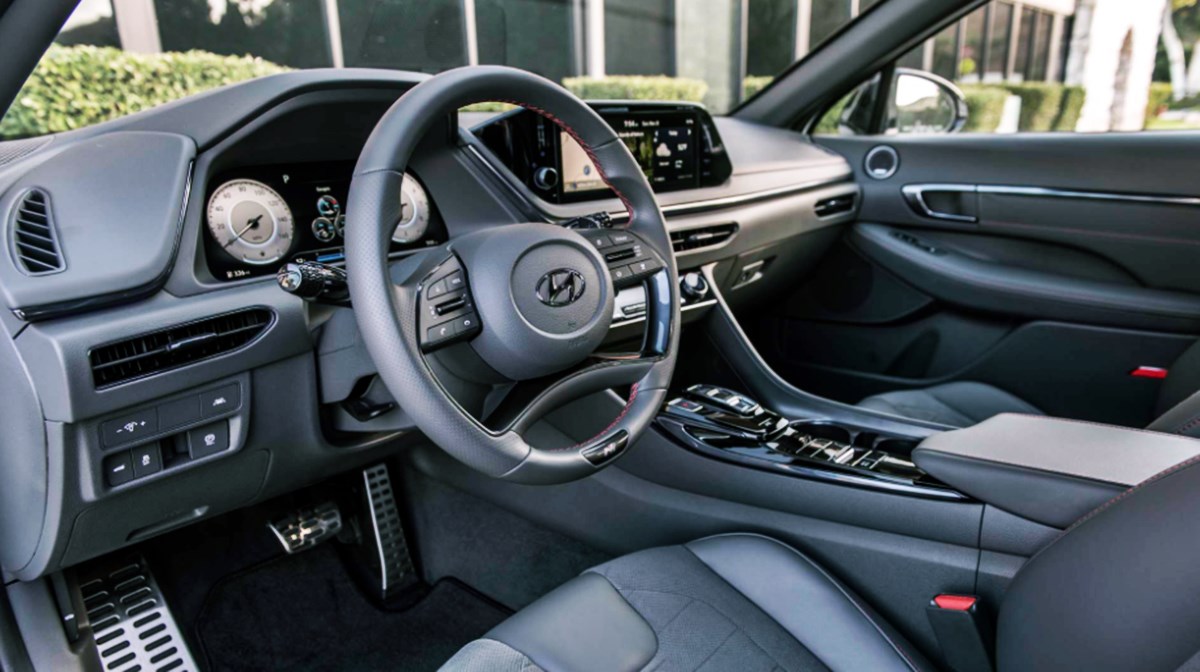
Bit N Line is limited to a nice set of sports chairs wrapped in leather and suede. Features include a digital measuring cluster featuring a simple round dial, a large 10.3-inch infotainment touchscreen, Bose premium audio system, a panoramic sunroof, and Hyundai digital key, which can turn your phone into a car key.
Priced at $34,195, the Sonata N Line is one of the pricier cars in its segment, but the powertrain’s performance leads the class, and handling is entertaining — for the front driver. This brings us to N Line’s biggest problem: A similar cash outlay buys a Kia Stinger 255-hp rear-drive or a 292-hp Dodge Charger, both of which offer a level of sophistication that Hyundai cannot match, but the N Line is a clear winner in drag stoplights.
required badges and red seam signals that “this car means business.” The most welcome interior addition is the front N sports seat, with Nappa leather bolsters and suede inserts. Despite the aggressive rolling, the seats remain very comfortable without the pinched feeling you can get from a similar gym chair. When I first sat on the Sonata N Line, the seat gave the first hint that I had underestimated the car.
Tweaks to the interior and exterior of the sedan are light but meaningful. Unlike the TRD, which has a fast-dressed and grumpy Camry, Hyundai has taken a more conservative path while still following the sports-sedan dress code.
There are several small scattered N Line badges and a new front fascia with three large air intakes. His buttocks were filled with four exhaust pipes, a black bottom bumper, and, of course, a diffuser. The wheels have a complex 20-spoke design.
Hyundai Sonata N-Line tire
The second clue came when I turned on the car and was greeted with a burble that I had not anticipated. The Powertrain Sonata N Line incorporates elements found throughout Hyundai’s portfolio. It boiled the engine from Genesis and its transmission from Veloster N.
The 2.5-liter Turbo-4 produces 290 horsepower and 311 pound-feet of torque. That’s a little less than the 300 hp engine making in the Genesis G80 and GV80, but I didn’t miss any extra horses. The transmission is a double wet clutch N 8-speed automatic developed by the performance division focusing on pleasure rather than efficiency. It is very similar to the transmission found in the Veloster N 2021 but has different gearing and final drive ratios on the Sonata N Line.
This combination works very well together. The engine spins excitedly and has a wide torque band that always seems to provide power. This proximity is matched by the transmission in the Sport+ Sonata N Line’s most aggressive drive mode, shifting the fire at an impressive speed and happily holding on to the gears almost to the red line.
As a result, the Sonata N Line is speedy. Hyundai did not release an official time of 0-60 mph, but the G80 with this engine makes that run in about six seconds, and the car weighs about 400 pounds more than the Sonata N Line. I am sure that the Sonata N Line beat that time with relative ease. It was amazing how fast the car felt.
The Sport+ not only makes the transmission more aggressive but also encourages rear stability control. This can mean different things in different vehicles. In some vehicles, stability control dies completely, while in others, it gives you little room to play around while still being prepared to intervene.
I suspect the Sonata N Line will go well on the conservative side, but I was wrong. In Sport+ mode, you can turn the tire at launch (which is why it has launch control), and if you get into the gas hard from the turn, you can rotate the tire in the second and third gears.
The only option available on the Sonata N Line was a set of summer tires for an extra $200, a box that I was happy to check out my test vehicle because they died cleanly. It also helped handle the car, which was another pleasant surprise.
2022 Hyundai Sonata N-Line Engine
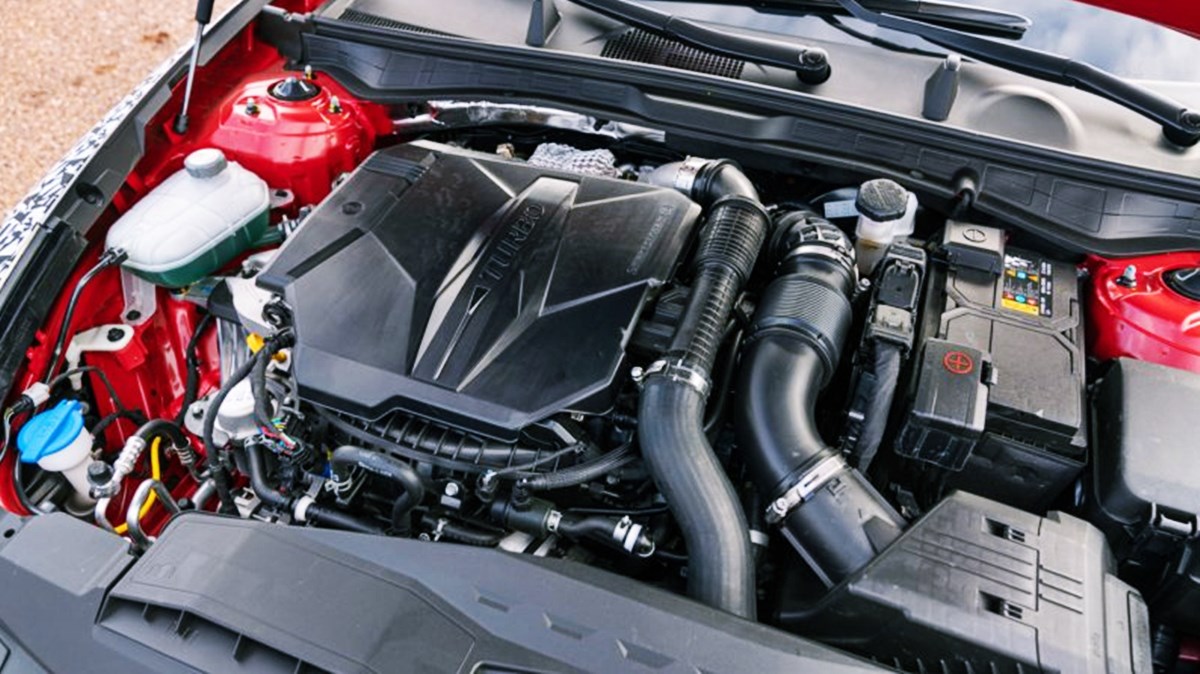
Suspension
The Powertrain is an unquestionable highlight to drive this car for me, but that doesn’t mean it’s bent over in the handling department. The increase in suspension through the Standard Sonata is very significant.
N Line has stiffer chassis bushings, engine seats, transmission seats; specially tuned damper; and thicker stability bars. The car also comes with improved brakes and rack-mounted MDPS, allowing for faster steering response and a better feel than the column-mounted MDPS found in the regular Sonata.
With summer tires, the Sonata has a staggering amount of grip and is similar to the Elantra N Line, which lines the line between comfort and responsiveness. Few body rolls are visible during faster steering movements, but it feels progressive and linear rather than a sudden shift that will balance the car.
It also has a bit of torque steering but not as much as I expected. The Sonata N Line has no limited-slip differential, and I am concerned that engine power will be difficult to control when exiting the turn, which can be a problem in front-wheel-drive cars. If you get the throttle early, the front end wiggles a little, but if you can, be patient and apply the throttle right after the sedan’s top is launched alternately with gusto.
An equestrian engineer told us calibration was not yet complete, and features such as automatic launch control and rev-matching were not installed, but even pushed hard, it was hard to say anything was missing. Punctured into sport plus’s most aggressive driving mode, the transmission selects gears smartly enough to make the steering wheel paddle redundant.
If you choose to keep using them, they respond immediately. Until now, there was no way to lock the transmission in manual mode (it would be back to automatic if you haven’t used a paddle in a while), and it would automatically upshift in the redline, but that could change.
Transmission intelligence pairs very well with this engine, whose power delivery is clearly nonlinear. It starts from linear, rises gently from idle to 3,000 rpm, and provides enough torque to get you through your journey.
From 3,000 to 5,000, it took off like a rocket with a surge of fat power that made the car feel faster than possible. Stopwatch tests show the N Line will reach 60 mph in 6.0-6.5 seconds, roughly two seconds faster than the standard Sonata with an optional turbocharged 1.6-liter engine.
Transmission basically bifurcates both of these behaviors, so you get normal driving behavior or great power but don’t feel the transition as the turbo spools up. Driving is light, and the car responds in kind but put your foot down, and you get all of that.
Knowing what’s in it, Normal mode can feel like just a lazy boy if you like sporty driving, but you can coax it with a heavy right foot. Sports mode is an aggressive boy to get around town, but if you want the feel of that sports sedan, that’s appropriate. Sport Plus is back road stuff because when you really want to enjoy the ride.
2022 Hyundai Sonata N-Line Competition
Not many vehicles compete directly with the Sonata N Line, which has power and price. The two most prominent examples are the Nissan Maxima and Toyota Camry TRD. But it’s hard to call them competitors because the Sonata N Line drives an absolute loop around them both.
Maxima has a V-6 that works with a constantly varied transmission. Drawing power from that combination can be frustrating: he’s the opposite of Hyundai’s response. Although Maxima makes 5 more horsepower, it is almost inaccessible to the driver.
The Camry has a V-6 paired with an 8-speed automatic duo that approaches Hyundai’s turbo-4 and 8-speed dual-clutch transmissions. However, it’s still not very responsive, thanks to the V-6 without the power band’s breadth. I would also give the Sonata N Line the advantage of handling both of these vehicles, with the Camry approaching but Maxima again taking the rear.
The Sonata N Line really stands alone in a strange space. I doubt many mid-size sedan buyers going into the transaction want to maximize performance in this form factor.
Sonata N-Line Impressions
The Hyundai Sonata N Line is a proven athlete, but it won’t mean much if it’s a bad teammate. That’s not the case. The Sonata’s cabin is airy and spacious like its less performance-minded siblings, and for N Line, seats are coated in black leather and microfiber with red detailing.
The front sports seat is a special touch of other models. Not only do they look great, but they also display more lateral reinforcement to keep the driver safe under high cornering loads. The roll can also be adjusted, so you can tighten it to keep yourself from gliding in the mountains and open it to relax on the way home. Although this feature is available in some luxury cars, it is unheard of at this price point.
2022 Hyundai Sonata N-Line Price
Prices for the Sonata N Line start at $34,195, representing a $5,000 increase over the SEL Plus Sonata that became the basis. Such a premium would normally bother me, but I have so much unexpected fun behind the wheel that the numbers confuse me. This is my new favorite mid-size sedan, and I fell for it as fast as the front wheels started smoking.

